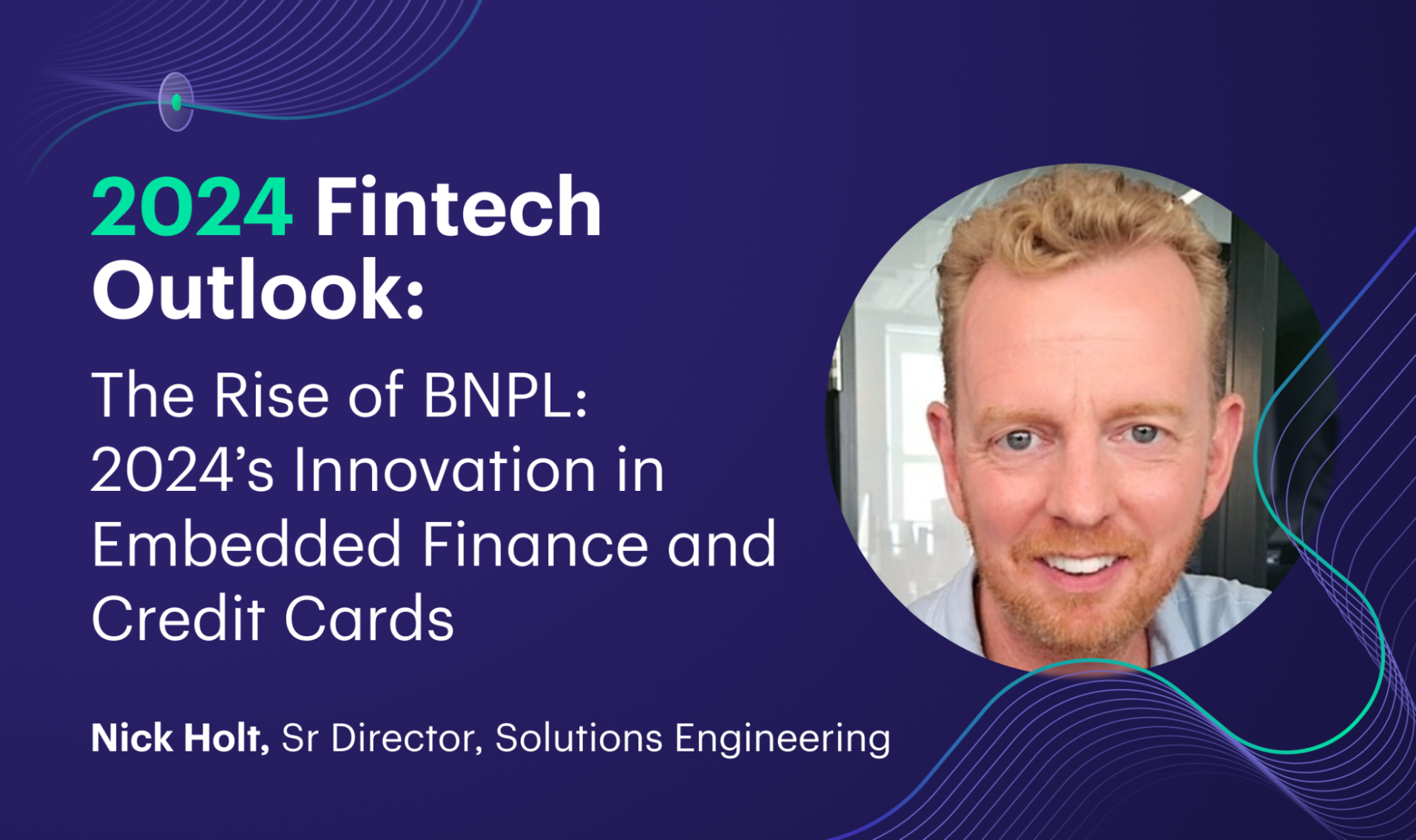Payments as an experience: meet the entrepreneur and author defining the future of business
For most people, the all-consuming act of launching a business is enough to be getting on with. Not so for tech entrepreneur Sophie Guibaud, who was part way through writing an authoritative book on embedded finance when she joined the founding team of Fiat Republic, the startup focused on solving a niche crypto pain point. Published in 2022 and co-written with thought leader Scarlett Sieber, Embedded Finance - When payments become an experience is a comprehensive overview of an approach to technology that is fast changing user journeys everywhere. True to form, busy Sophie happily found time in her packed schedule to share knowledge and insights with Marqeta’s Deanna Fernandez in the following fascinating interview.
So Sophie, tell us why you’re interested in embedded finance?
I’ve been working on Banking-as-a-Service propositions since 2012 but it was during my time as MD Europe at Fidor which I joined in 2015, where I started to see the potential of embedded finance. We launched O2 Banking, which was linked to users’ mobile numbers and offered advantages based on mobile phone usage. And that is very much the definition of an embedded-finance experience. It was at this point that I thought: ‘this is going to be everywhere’ - there was no way back. The thing that prompted me to write about this trend was when I read the annual reports of Shopify and Grab in 2021, who were making 50 percent of their revenue from financial services already. So my gut feeling that embedded finance was going to become huge was finally coming true.
How did you come to partner with Scarlett on this project?
I’d started running weekly clubhouse meetings around embedded finance as part of the Fintech & Payments club, and we were looking at how it’s going to enable everyone to become a fintech. Scarlett and I met at Money 2020 a few years ago and we became good friends, catching up on a monthly basis to brainstorm ideas in both our personal and professional lives. I invited her to the clubhouse, after which she revealed that she’d been approached many times to write a book and asked me whether it would be something we could do together. It immediately made sense because we had the most complementary profiles and embedded finance felt like an important topic to write on. I was working with tech providers, leading the commercial development of several banking-as-a-service providers, and she had been working with banks and knew how to provide deep insight from the corporate and board level aspect.
How did you write a book and launch Fiat Republic at the same time?
As a matter of fact, I started writing the book before launching Fiat Republic. For sure, it was challenging timing but having two pairs of hands to write a book made it much easier. We drew up a plan and started writing the chapters one by one, during weekends and evenings, and it really wasn’t as painful an experience as you might think. That’s because we knew exactly what needed to be written and we had access to lots of experts, who helped us to enrich the book. Interestingly, we were committed to writing 50,000 words but we actually had 64,000. The volume wasn’t a problem because we had so much content and to be honest we could have written much more.
When thinking about the audience for the book, we wanted it to be interesting for people from the industry and that’s one of the reasons we included a chapter all about regulation and embedded finance tech providers. I remember discussing this with the editors we were in discussions with, who were unsure about the regulatory topic, but we insisted on it because we felt it was such an important thing to include. The truth is, anyone can read the book because this is going to touch everyone. We wanted it to be accessible to tech people, bank executives and geeks. And that’s why we decided to make it as lively and non-technical as possible.
What is your favourite example of how embedded finance is being used and what was your favourite part of the book to write?
I think that Amazon supermarket is the smoothest experience offered anywhere so far. You go into the shop, pick your stuff and go. There’s one in London and in the U.S. and it’s something that has been live since just before the book launched. In fintech, things are moving so fast and this experience showcases what the future will bring.
In terms of my favourite part of the book, I really enjoyed writing Mia’s and Mike’s stories. They’re about two people using embedded finance in 2030. It really made us think about what life will be like in the future. My second favourite part was doing the interviews - some on the record and off the record ones. Getting those perspectives and experiences was really interesting because it fed us loads of content but we learnt a lot as well.
What are the key trends and technologies driving embedded finance forward?
Regulation is one of the most important trends. I believe it’s really important for embedded finance to remain accessible, i.e. not requiring everybody to become a financial institution. If you think about marketplaces that have already launched fintech units, requiring them to become regulated would be a really big step for such businesses, at least when they launch. At the moment in Europe, electronic money institutions and banks can appoint agents that wish to offer embedded finance services to their users, and this lowers the barrier to entry.
That said, I think it’s right that regulators are looking into Banking-as-a-Service oversight. We need regulators to engage industry experts deeply to understand the risks to end users and mitigate them. The frameworks for regulation have already been put in place but they need to keep adapting to new use cases.
Down the line, we are going to see more and more specialisation in Banking-as-a-Service, with new providers supporting some of the emerging use cases. We need to see more BaaS solutions that are focused on serving just a few use cases very well - to provide the best payments experience for users, matching the 2030 experiences we talk about in the book.
What is the impact on society, consumers and companies? Where is embedded most advanced?
The impact of embedded finance is multifaceted. Although it’s enabling anyone to launch a financial service, it’s basically for any tech company that leverages user data to provide better experiences. It’s also about increasing fairness in financial services, for example, by adjusting the price of a loan by tapping into a broader dataset than that held by a bank. This will be a big element of financial inclusion for both retail and corporate customers, increasing accessibility to financial services.
A good case study on this kind of accessibility comes from Shopify, which launched banking accounts for its users when it realised customers were having to wait a minimum of two weeks to open traditional bank accounts.
Additionally, we could see job creation and a bigger financial services sector. Because if everybody becomes a fintech then we will need a lot more financial professionals to support this development.
Looking at where embedded finance is most advanced, the U.S., Europe and Asia are very strong. Embedded finance doesn’t have to present itself as a financial experience. Think of it like this: you’re here to buy the TV, not take out a loan.
What can the smaller players learn from the likes of Amazon in terms of seamless experiences?
I think it’s all about focusing on answering customer needs - embedded finance is for everyone. Yes, the heavyweights are making the biggest impact, particularly around earnings, but if you step back from the financials there is some solid industry data that shows that the primary factor in launching an embedded finance experience is not always revenue driven but experience driven. It’s about increasing the loyalty, stickiness and app usage and realising that this is the way to generate regular business. So, even if you’re launching a small business, it always has to be about putting the customer first.
What are the consequences of not being ready for embedded finance?
Well, if you’re a Bank you need to get into it now. The first bank launching in a geography really has a first mover advantage, squeezing the size of the cake for other banks. The legacy banking platforms have started developing use cases. But as a new tech provider you have space for niche propositions focused on lending, marketplaces and so on. For larger tech companies that have the brand and audience, the risk of not looking into it is that you will miss out on providing embedded finance experiences their user will find somewhere else and develop a stronger relationship with your customers. They will also miss out on the revenue stemming out of it obviously. ,. But that’s not the primary focus of launching an embedded proposition at least at first - as I mentioned, it’s about user experience.
You set up Fiat Republic - Fiat-as-a-Service - how is Fiat Republic playing a part in the embedded finance revolution?
We provide Fiat-as-a-Service which means that we provide banking and payment facilities for crypto platforms. We make it easy for them to collect fiat deposits and withdrawals for their end users. It’s definitely embedded finance because we facilitate collecting monies so users can then buy crypto at our clients. It’s a specific niche with a real pain experienced by our crypto platforms clients who experience difficulties securing and maintaining banking relationships. So through a Consortium that we have set-up and by being an electronic money institution ourselves, we are aiming at raising the playing field and building strong relationships with our banking partners by enabling them to take on crypto flows securely while offering crypto platforms reliable banking rails. And that’s the reason why we’ve been successful so far.
Embedded Finance - When payments become an experience is published by Wiley and is available from major booksellers.




